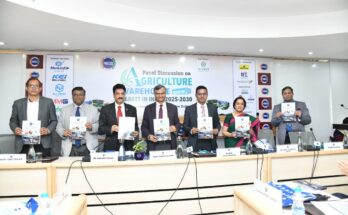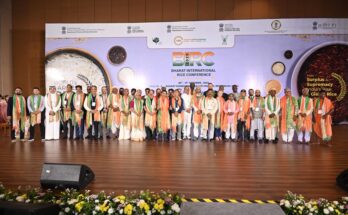Keeping a normal monsoon, predicted by the meteorological department, in mind and the trends of acreage so far, Indian Sugar Mills Association (ISMA) has estimated that the sugar production in 2018-19 sugar season (SS) will be around 350 – 355 lakh tonnes. This is about 28 – 33 lakh tonnes higher than the current 2017-18 SS production of around 322.5 lakh tonnes.
Based on the satellite images procured in the latter part of June 2018, the total acreage under sugarcane in the country is estimated to be around 54.35 lakh hectares in 2018-19 sugar season (SS), which is about 8 percent higher than 2017-18 sugar season’s cane area of around 50.42 lakh hectare. It is also noted that area is almost similar to the area reported in 2013-14 and 2014-15 and slightly below 54 lakh hectare, ISMA has said in the a report today.
Uttar Pradesh, the leading sugarcane producing state in the country, is estimated to have higher sugarcane area at 23.40 lakh hectares, as against 23.30 lakh hectare in 2017-18 SS. ISMA is expecting a better yield in 2018-19 SS due to further increase in area under the high yielding cane variety Co0238. That will increase the sugarcane production and availability for crushing by sugar mills. Thus, sugar production in the state in 2018-19 SS is estimated to increase to 130 – 135 lakh tonnes, which was 120.5 lakh tonnes in 2017-18 SS.
According to the sugar mills body, the other major sugar producing state, Maharashtra’s cane area has gone up by about 25 percent in 2018-19 SS, which is mainly due to timely and adequate rainfall from June to September 2017. As against the cane area of 9.15 lakh hectare in 2017-18 SS, area is expected to increase to 11.42 lakh hectare in 2018-19. The state recorded highest ever yield of about 108 tonnes per hectare in 2017-18, which is mainly attributed to well distributed and timely rainfall during southwest monsoon of 2016 and 2017, good water availability in reservoirs and higher than normal percentage of plant cane. For season 2018-19, all other conditions being similar the yield is expected to be lower than 2017-18 SS due to higher percentage of ratoon cane (having lower yield) as plant cane of 2017-18 SS will get converted to ratoon cane. Sugar production is, therefore, estimated to be around 110 – 115 lakh tonnes in 2018-19 SS, as against 107.15 lakh tonnes produced in 2017-18 SS.
Similar to Maharashtra, due to timely and adequate rainfall from June to September 2017, sugarcane area in Karnataka also increased in 2018-19 SS. Area under sugarcane in 2018-19 SS is expected to be about 5.02 lakh hectare as against 4.15 lakh hectare in 2017-18 SS. Sugar production in 2018-19 SS is estimated to be around 44.80 lakh tonnes, as against 36.54 lakh tonnes expected to be produced in 2017-18 SS, ISMA statement has said.
Sugarcane area in Tamil Nadu in 2018-19 SS has increased to 2.60 lakh hectare as against 2.01 lakh hectare in 2017-18 SS. But, due to deficient rainfall in major cane growing districts during north eastern monsoon 2017, sugarcane yield is expected to increase marginally resulting in increase in sugar production. Sugar production is expected to be around 9 lakh tonnes in 2018-19 SS as against 6 lakh tonnes expected to be produced in 2017-18 SS, the sugar mills association has estimated.
During 2017-18 SS, till June 30, 2018, about 321.95 lakh tonnes of sugar has been produced and another 0.5 – 0.6 lakh tonne is expected to be produced in the special season till September, 2018 in Tamil Nadu and Karnataka, taking total sugar production in 2017-18 SS to about 322.5 lakh tonnes.
After considering rainfall in July – September, 2018, water situation in reservoirs and second set of satellite images in September 2018 for across India, ISMA will review the analysis in September, 2018 and will release their 1st advance estimates for 2018-19 season. By that time, the crop will be more mature and there will be more clarity on the rainfall and water availability.
Sugar production estimated to be 355 lakh tonnes in 2018-19




